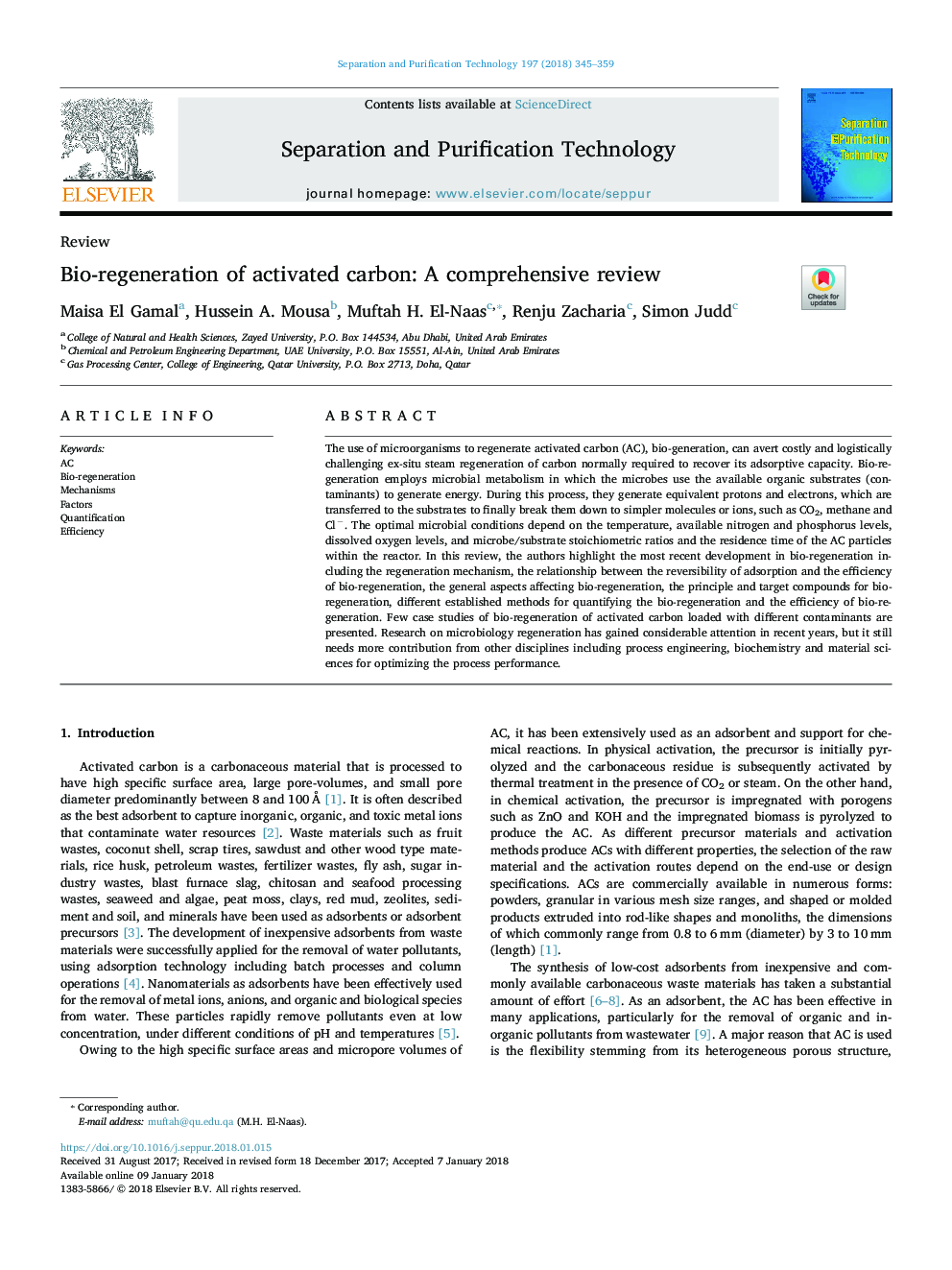| Article ID | Journal | Published Year | Pages | File Type |
|---|---|---|---|---|
| 7043938 | Separation and Purification Technology | 2018 | 15 Pages |
Abstract
The use of microorganisms to regenerate activated carbon (AC), bio-generation, can avert costly and logistically challenging ex-situ steam regeneration of carbon normally required to recover its adsorptive capacity. Bio-regeneration employs microbial metabolism in which the microbes use the available organic substrates (contaminants) to generate energy. During this process, they generate equivalent protons and electrons, which are transferred to the substrates to finally break them down to simpler molecules or ions, such as CO2, methane and Clâ. The optimal microbial conditions depend on the temperature, available nitrogen and phosphorus levels, dissolved oxygen levels, and microbe/substrate stoichiometric ratios and the residence time of the AC particles within the reactor. In this review, the authors highlight the most recent development in bio-regeneration including the regeneration mechanism, the relationship between the reversibility of adsorption and the efficiency of bio-regeneration, the general aspects affecting bio-regeneration, the principle and target compounds for bio-regeneration, different established methods for quantifying the bio-regeneration and the efficiency of bio-regeneration. Few case studies of bio-regeneration of activated carbon loaded with different contaminants are presented. Research on microbiology regeneration has gained considerable attention in recent years, but it still needs more contribution from other disciplines including process engineering, biochemistry and material sciences for optimizing the process performance.
Related Topics
Physical Sciences and Engineering
Chemical Engineering
Filtration and Separation
Authors
Maisa El Gamal, Hussein A. Mousa, Muftah H. El-Naas, Renju Zacharia, Simon Judd,
